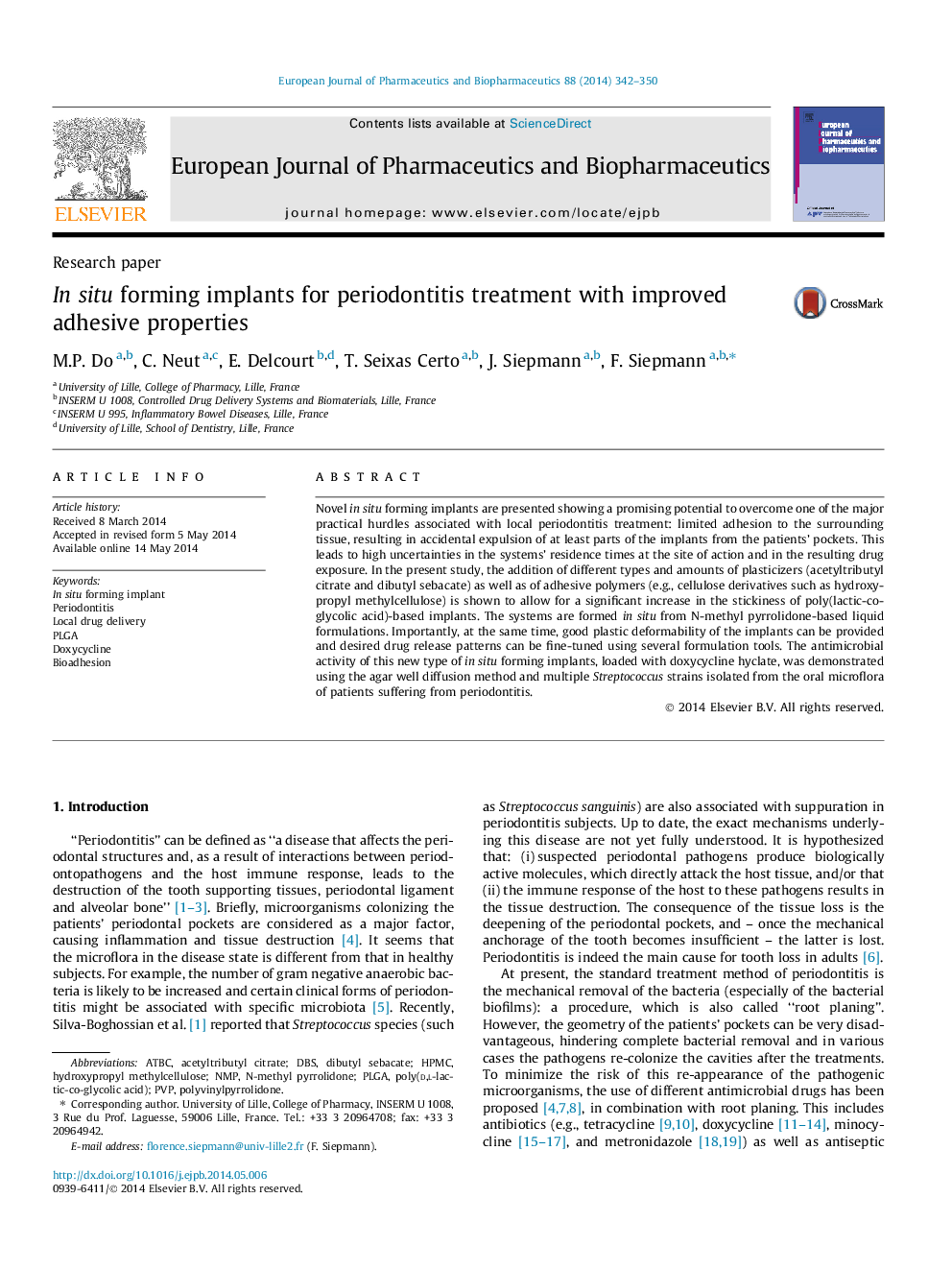| کد مقاله | کد نشریه | سال انتشار | مقاله انگلیسی | نسخه تمام متن |
|---|---|---|---|---|
| 2083815 | 1545338 | 2014 | 9 صفحه PDF | دانلود رایگان |
• In situ forming implants with improved adhesive and mechanical properties are proposed.
• Accidental implant expulsion from the patients’ pockets is likely to be reduced.
• Desired drug release kinetics can be adjusted using several formulation tools.
• Antimicrobial activity against multiple Streptococcus strains from patients is shown.
Novel in situ forming implants are presented showing a promising potential to overcome one of the major practical hurdles associated with local periodontitis treatment: limited adhesion to the surrounding tissue, resulting in accidental expulsion of at least parts of the implants from the patients’ pockets. This leads to high uncertainties in the systems’ residence times at the site of action and in the resulting drug exposure. In the present study, the addition of different types and amounts of plasticizers (acetyltributyl citrate and dibutyl sebacate) as well as of adhesive polymers (e.g., cellulose derivatives such as hydroxypropyl methylcellulose) is shown to allow for a significant increase in the stickiness of poly(lactic-co-glycolic acid)-based implants. The systems are formed in situ from N-methyl pyrrolidone-based liquid formulations. Importantly, at the same time, good plastic deformability of the implants can be provided and desired drug release patterns can be fine-tuned using several formulation tools. The antimicrobial activity of this new type of in situ forming implants, loaded with doxycycline hyclate, was demonstrated using the agar well diffusion method and multiple Streptococcus strains isolated from the oral microflora of patients suffering from periodontitis.
Figure optionsDownload high-quality image (120 K)Download as PowerPoint slide
Journal: European Journal of Pharmaceutics and Biopharmaceutics - Volume 88, Issue 2, October 2014, Pages 342–350
